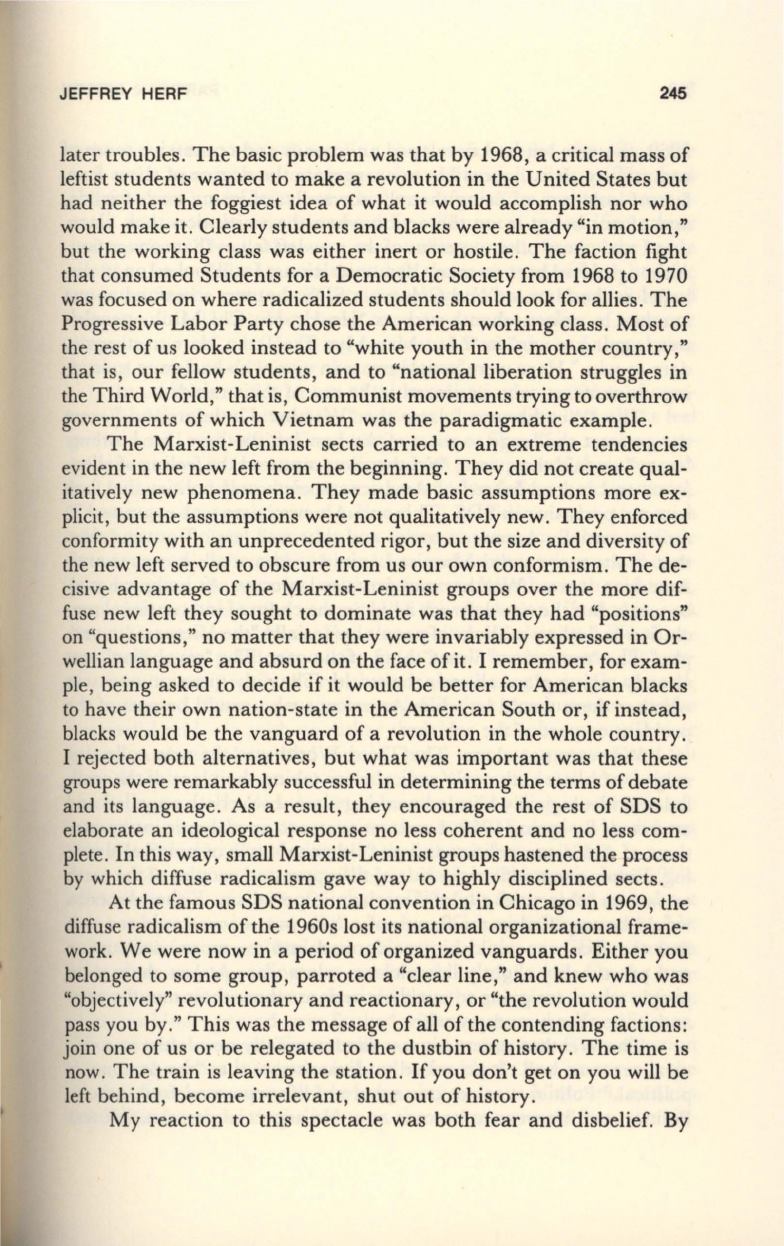
JEFFREY HERF
245
later troubles. The basic problem was that by 1968, a critical mass of
leftist students wanted to make a revolution in the United States but
had neither the foggiest idea of what it would accomplish nor who
would make it. Clearly students and blacks were already "in motion,"
but the working class was either inert or hostile . The faction fight
that consumed Students for a Democratic Society from 1968 to 1970
was focused on where radicalized students should look for allies. The
Progressive Labor Party chose the American working class. Most of
the rest of us looked instead to "white youth in the mother country,"
that is , our fellow students, and to "national liberation struggles in
the Third World," that is , Communist movements trying to overthrow
governments of which Vietnam was the paradigmatic example.
The Marxist-Leninist sects carried to an extreme tendencies
evident in the new left from the beginning. They did not create qual–
itatively new phenomena. They made basic assumptions more ex–
plicit, but the assumptions were not qualitatively new. They enforced
conformity with an unprecedented rigor, but the size and diversity of
the new left served to obscure from us our own conformism. The de–
cisive advantage of the Marxist-Leninist groups over the more dif–
fuse new left they sought to dominate was that they had "positions"
on "questions ," no matter that they were invariably expressed in Or–
wellian language and absurd on the face of it. I remember, for exam–
ple, being asked to decide if it would be better for American blacks
to have their own nation-state in the American South or, if instead,
blacks would be the vanguard of a revolution in the whole country.
I rejected both alternatives, but what was important was that these
groups were remarkably successful in determining the terms of debate
and its language . As a result , they encouraged the rest of SDS to
elaborate an ideological response no less coherent and no less com–
plete. In this way, small Marxist-Leninist groups hastened the process
by which diffuse radicalism gave way to highly disciplined sects.
At the famous SDS national convention in Chicago in 1969, the
diffuse radicalism of the 1960s lost its national organizational frame–
work. We were now in a period of organized vanguards . Either you
belonged to some group , parroted a "clear line," and knew who was
"objectively" revolutionary and reactionary, or "the revolution would
pass you by." This was the message of all of the contending factions:
join one of us or be relegated to the dustbin of history. The time is
now. The train is leaving the station.
If
you don't get on you will be
left behind, become irrelevant, shut out of history .
My reaction to this spectacle was both fear and disbelief. By


